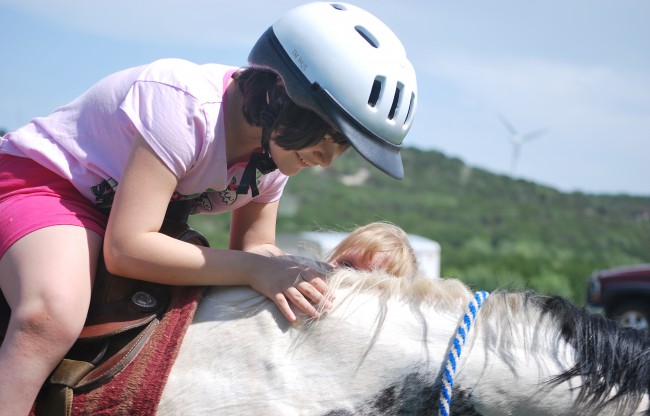
Children with autism may benefit from spending time with animals, whether the animals are part of a formalized animal therapy program, farm animals or family pets. The presence of an animal can help a child to focus, and provides an opportunity for interaction that is soothing to the perpetually over-stimulated synapses in an autistic child’s brain.
A new study published in the journal Neuron last week, found that the brains of autistic children have too many synapses, making it easier for an autistic child to become overstimulated. The physiological findings match the clinical observations of many of the symptoms, like hypersensitivity to sound, for example, that are exhibited by children with Autism Spectrum Disorder (ASD). In other words, it makes sense that if a child is overly sensitive to sound he may have too many nerve endings that are responding to the noise. This research provides the scientific evidence to back such a claim.
Because the findings in the new study describe a specific, physiological mechanism in the body, it is possible that new therapies could be developed to block some part of the mechanism and alleviate autism symptoms. The study is good news for families with ASD. However, any new pharmaceutical treatments that may come from this finding this are likely years away. The downside is that families living with ASD now want solutions now too.
The idea that children with autism can benefit from animal therapy is attractive because it represents an action that can be implemented almost immediately. A recent synthesis of animal therapy literature found that while some studies on animal therapy have been done, Animal Assisted Therapy (AAT) should be considered as a form of supplemental therapy, for which clinical efficacy still needs to be validated. The author of the synthesis also cautions that, as yet, there are no unifying practice guidelines for AAT, meaning there could be wide variations in the skill level and efficacy of animal therapy providers. The benefits of animal therapy are nevertheless real and relevant.
Autism educators have long observed that when autistic children find it difficult to relate to people, they sometimes find it easy to relate to animals. This finding alone can be a blessing to a family with one or more autistic children. By integrating interactions with animals into formalized plans of care, therapists and parents can help the child attain outcomes such as behavior management, emotional awareness and skills acquisition (including gross motor, fine motor, communication and care-taking skills). Animals also provide opportunities for sensory integration, reinforce task completion and stimulate social interaction.
The proprietors of the Animal Assisted Therapy Programs of Colorado state on their website that animals may “provide a way to reach… individuals that traditional therapies do not.” Their experience has shown that achieving outcomes through interactions with animals can carry over into other, human-to-human, relationships.
Children with autism may benefit from animal therapy. Many forms of animal therapy are available, but are only as effective as their providers. Individual providers must be chosen with care, and the provider should be willing to work within the parameters of any existing plan of care. Choosing a type of animal or method of interaction that best matches the child’s needs and interests is also important. For example, therapeutic horseback riding or dolphin therapy may be more appealing to one child with autism than another. Dogs can make loving additions to a family, especially if the dog is a specially trained service dog. Choosing animal therapy or any other option is a personal choice, and like any choice concerning health and welfare, should be made with care.
Opinion By Lane Therrell
Sources:
NYT
Everyday Health
Animal Assisted Therapy Programs of Colorado
Southern Illinois University, Carbondale



